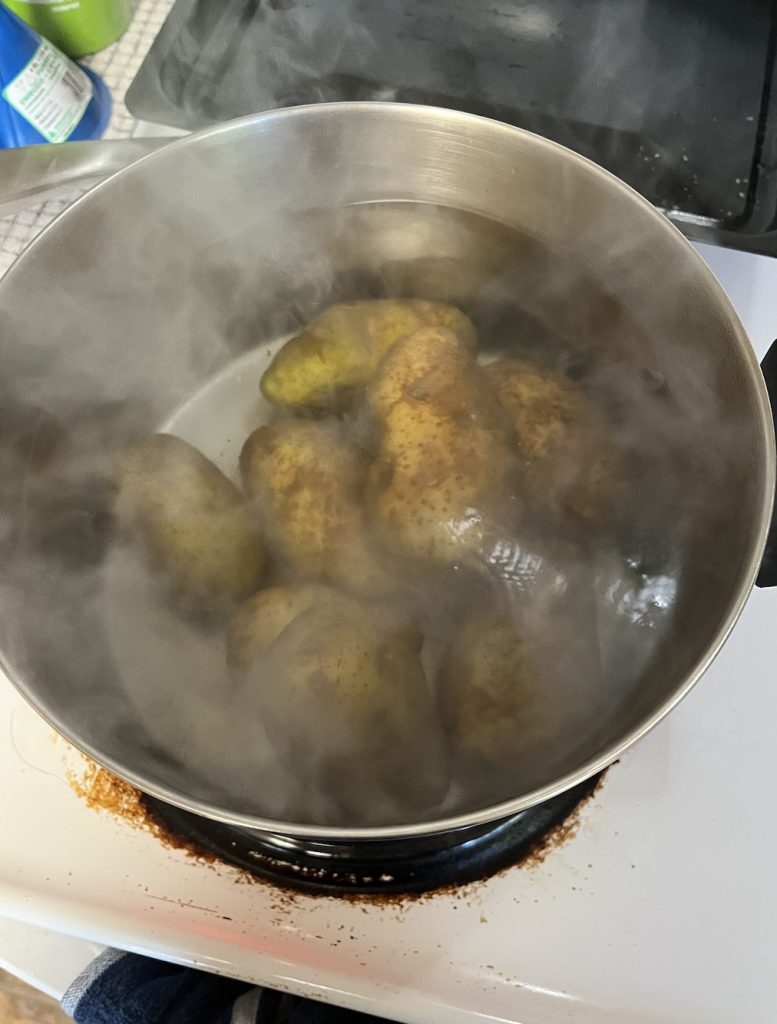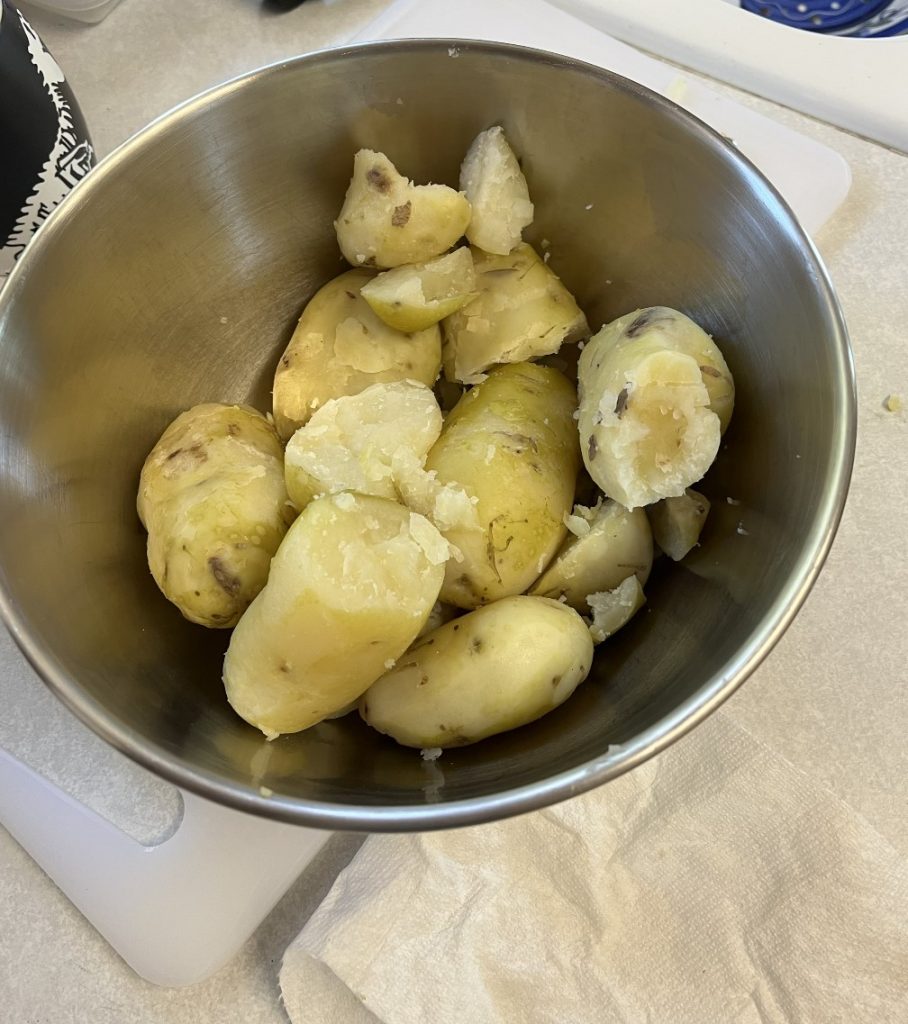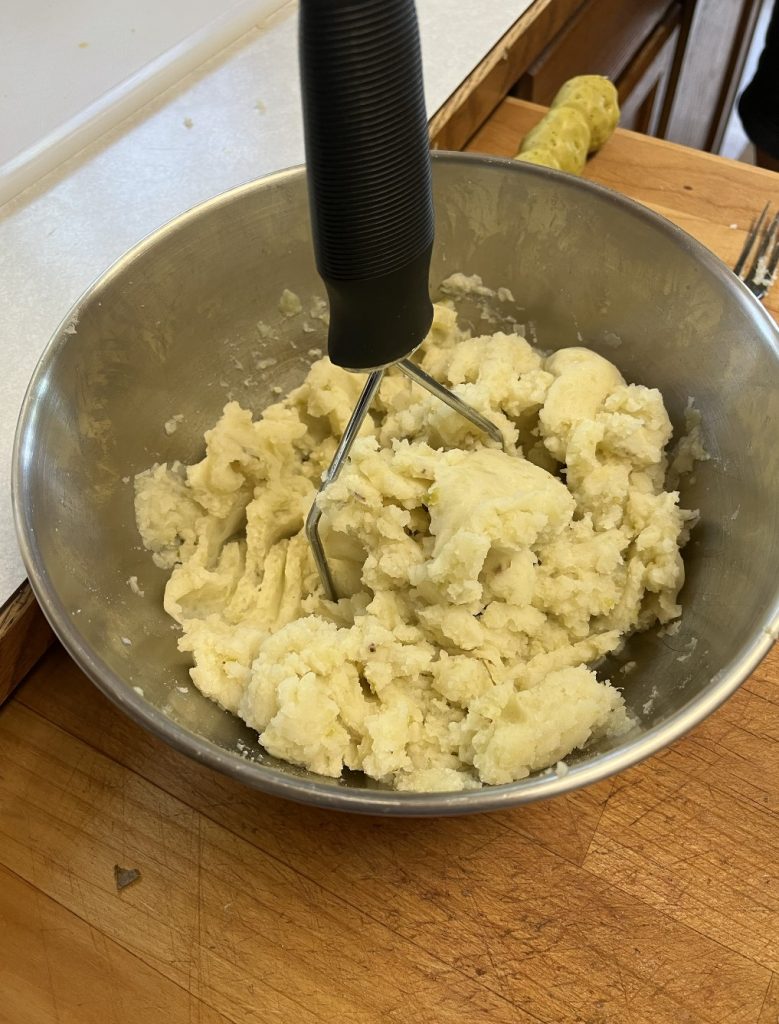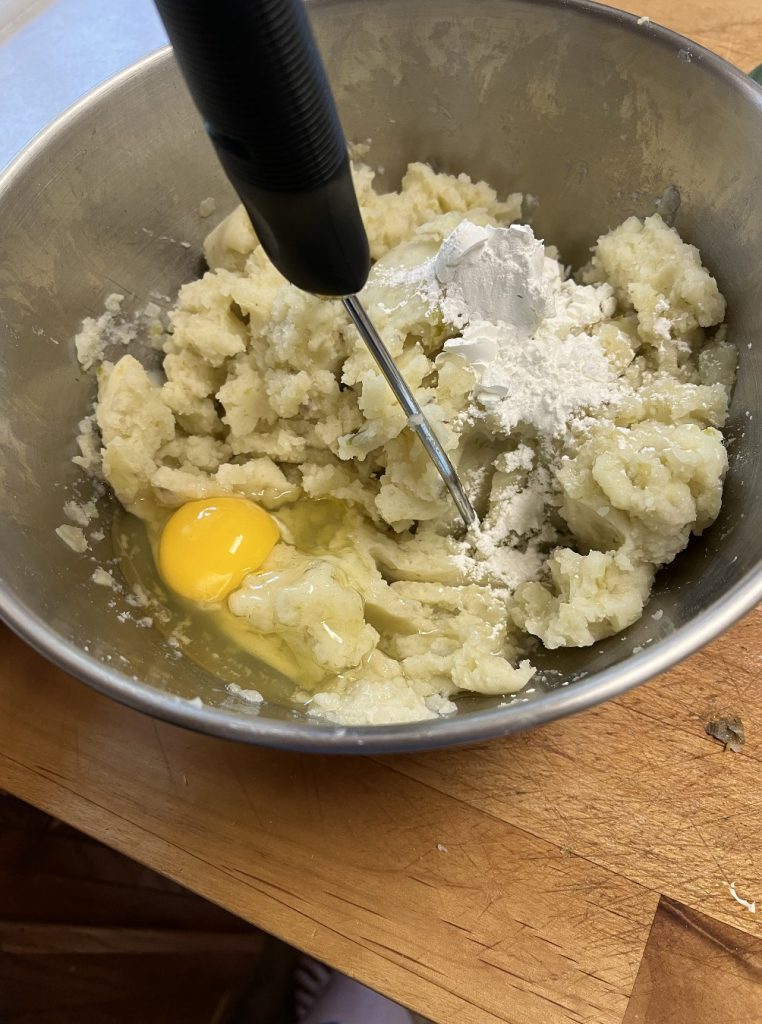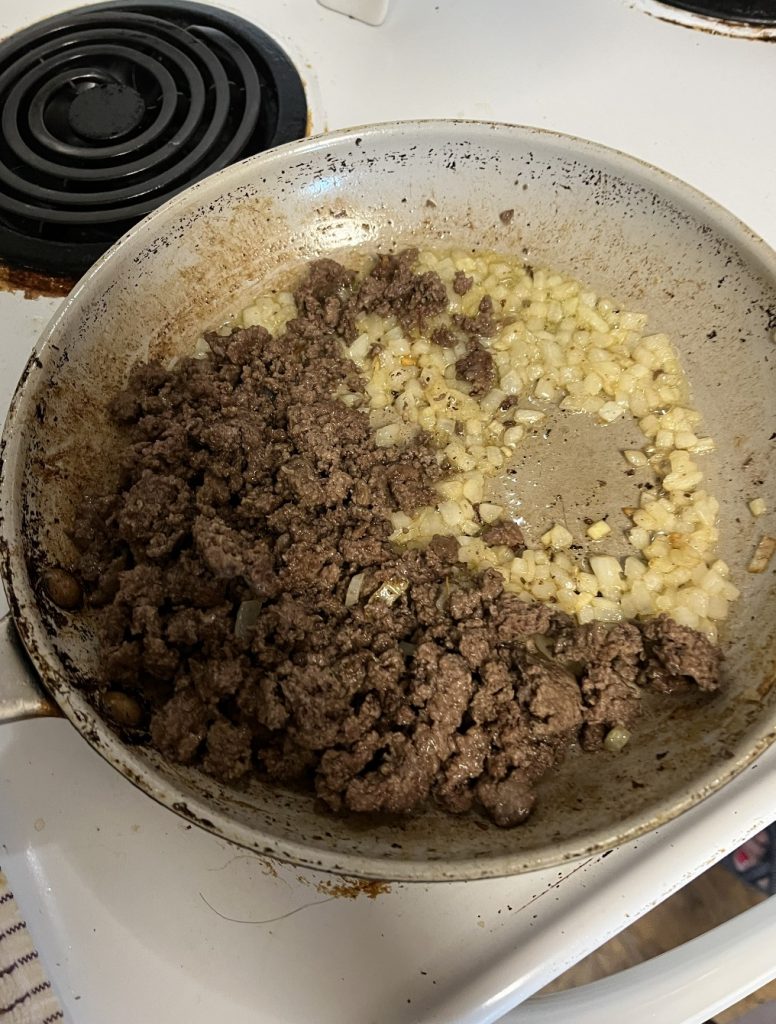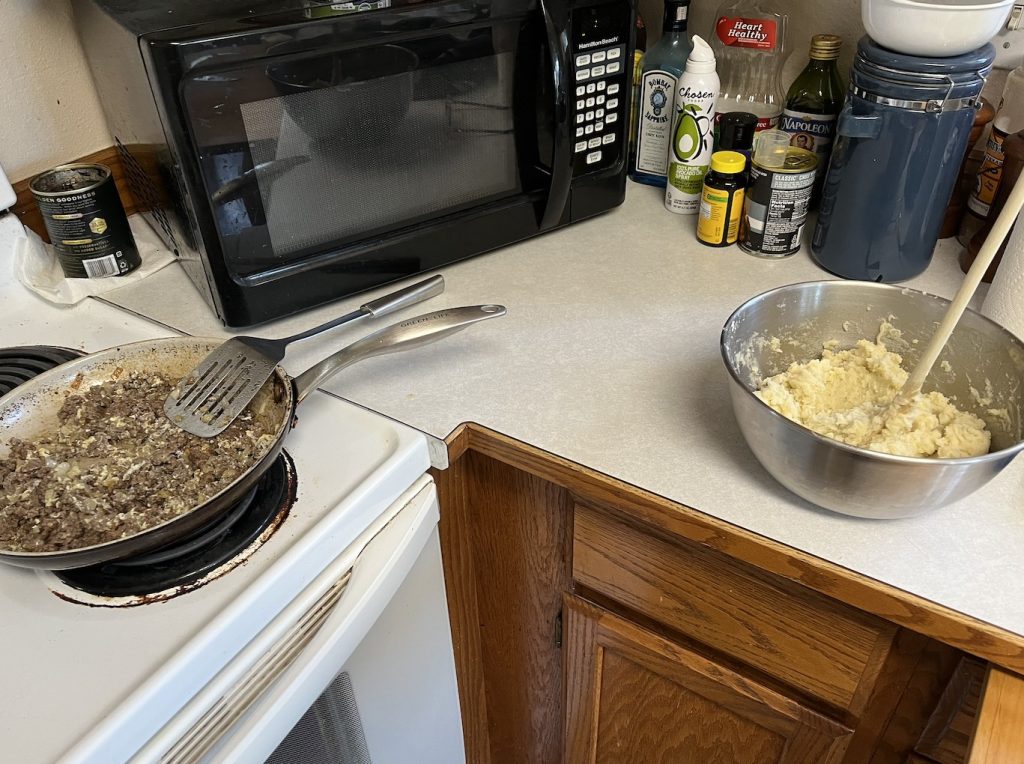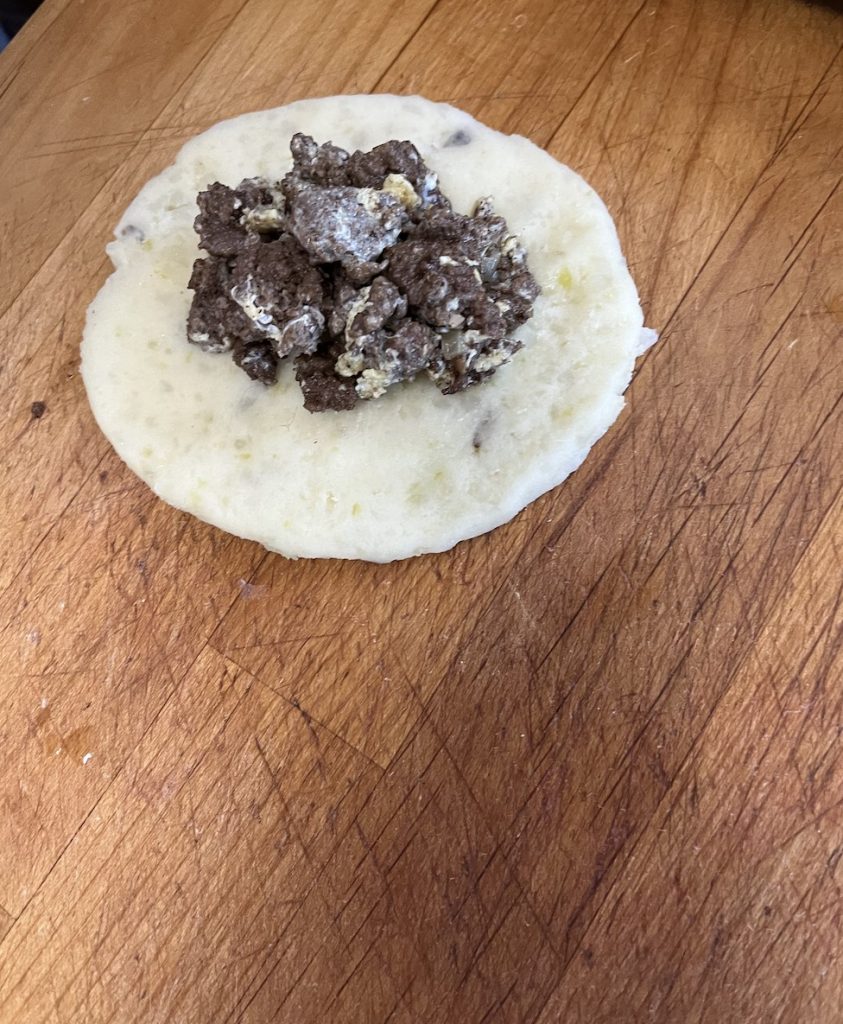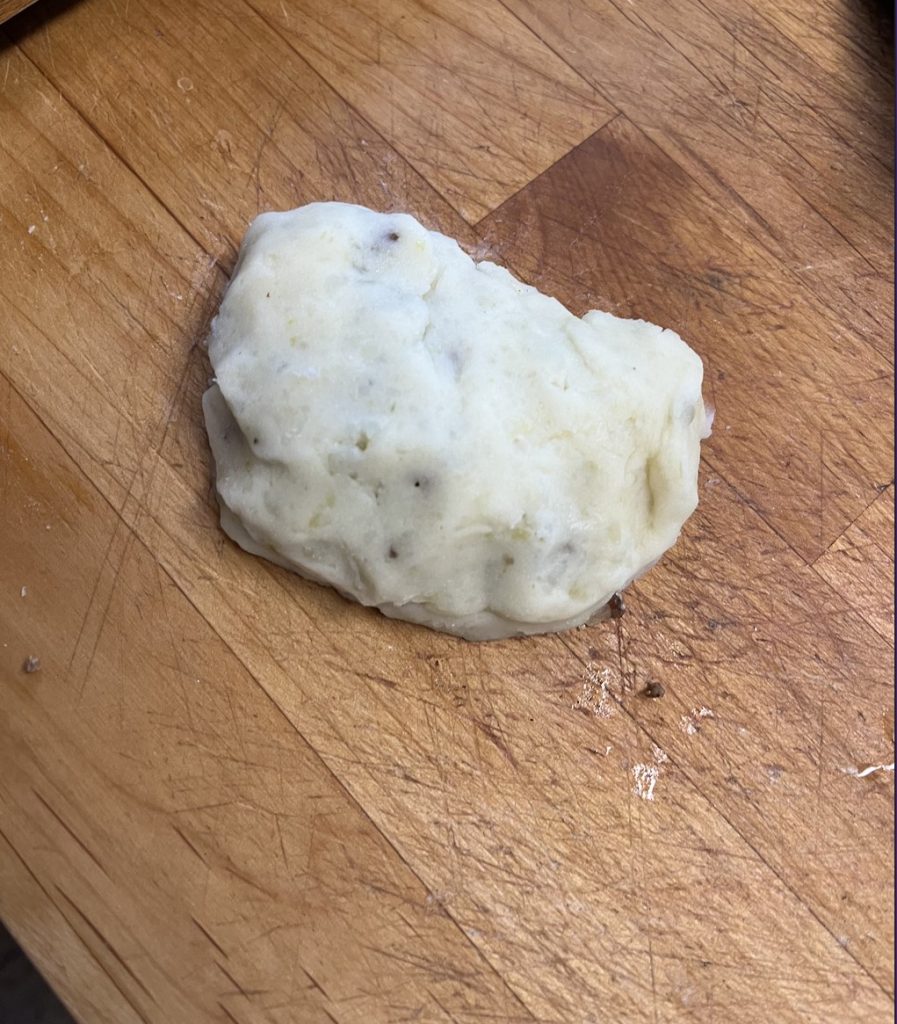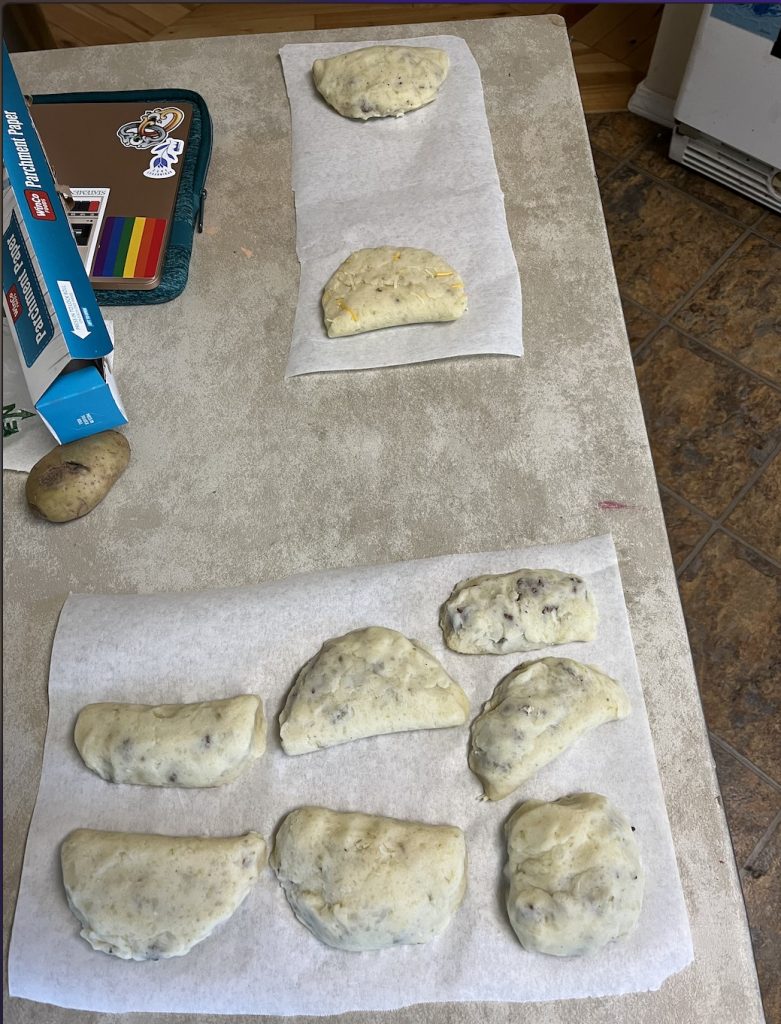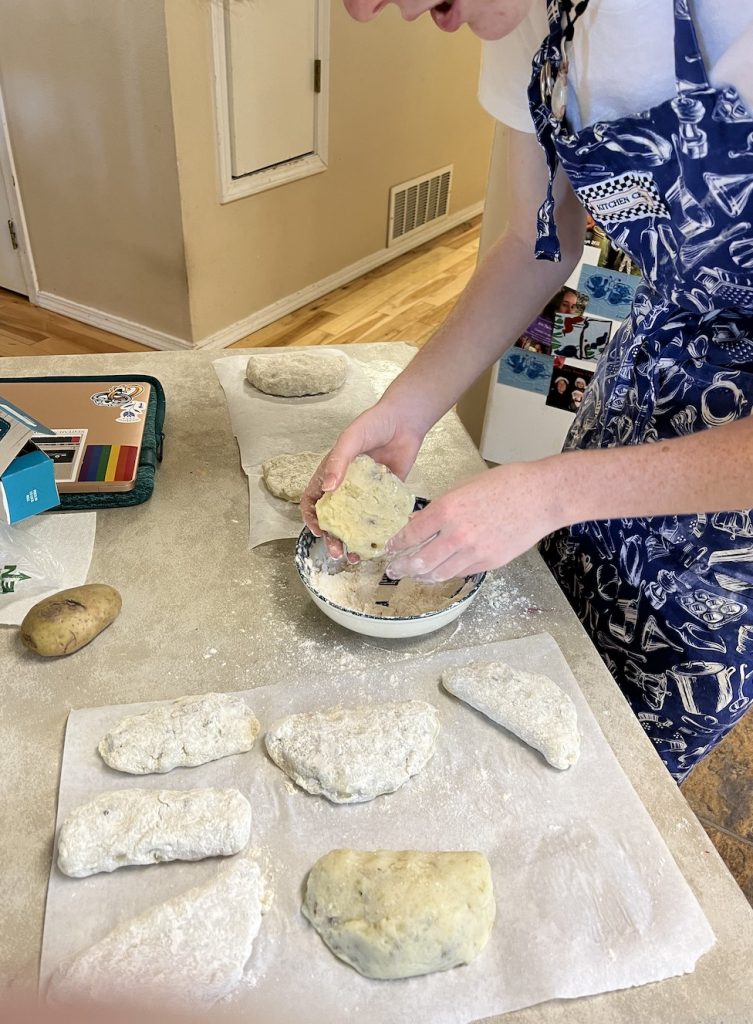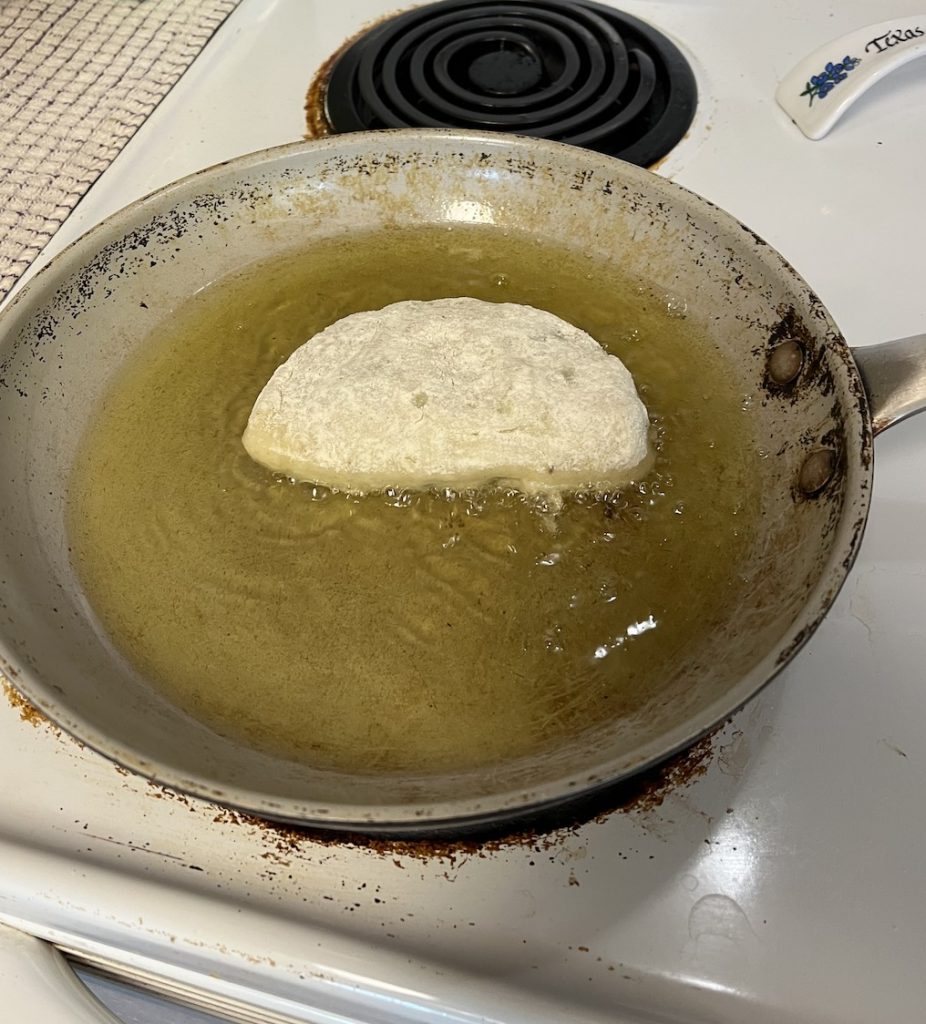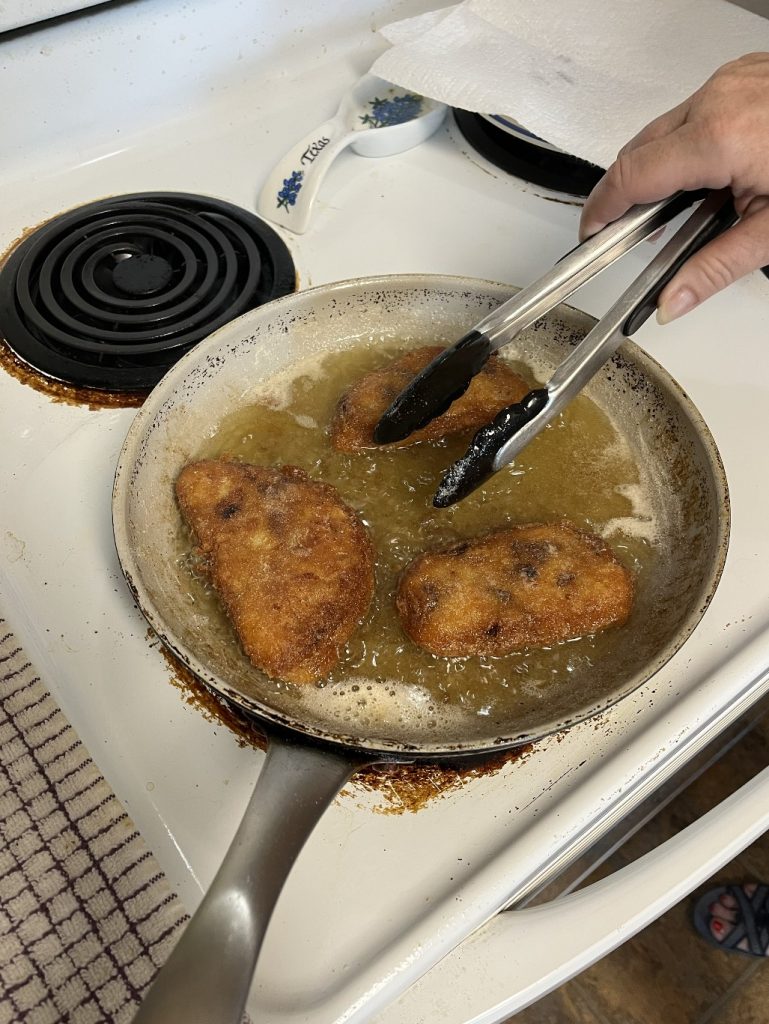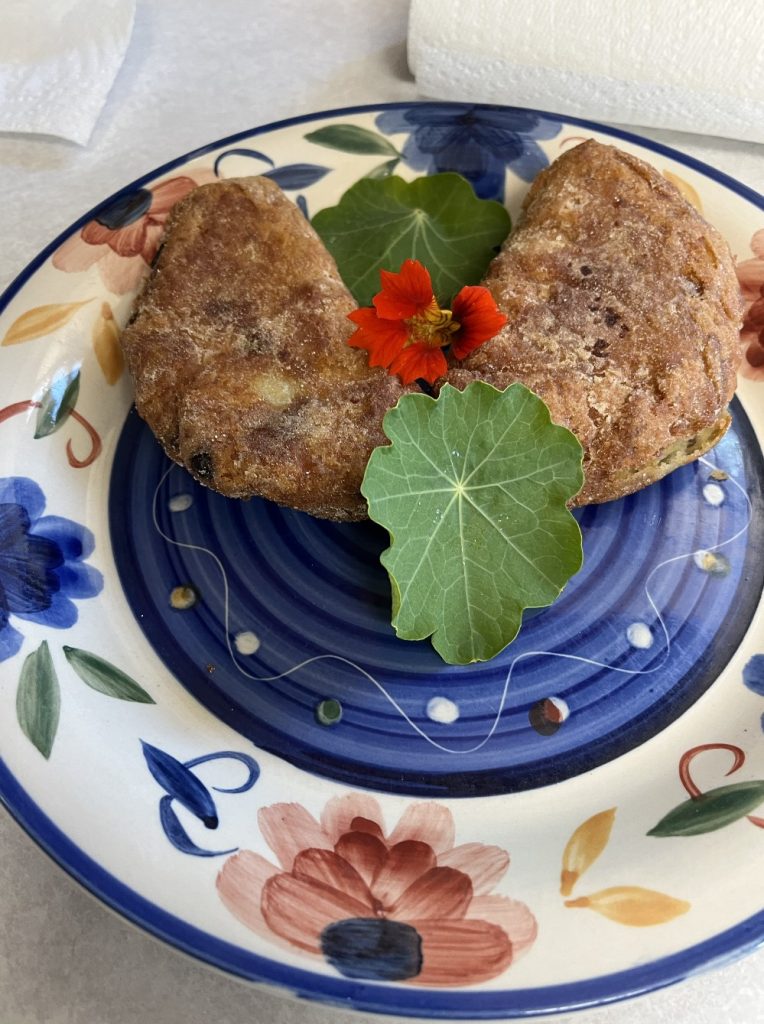By Julianna Cooper
During the summer of 2022 I traveled across the globe to visit the three Baltic states of Latvia, Lithuania, and Estonia. I was part of a three-week study abroad program “Postauthoritarian Borderlands: State and Society in the Baltics.” One of things I was most excited for in regards to the trip was getting to try East European cuisine. And while I wasn’t expecting so much dill, I was not disappointed. Some of the staples of Lithuanian cuisine include dill, beets, wheat, rye bread, mushrooms, and potatoes. All are well suited for the moist and cool climate of the Baltic states. Of these ingredients, potatoes are one of the most numerous and non-native. I grew up with a variety of potato-based meals, yet the various ways that potatoes are utilized in Lithuanian cuisine fascinated and delighted me.
I highly enjoyed all the cuisine that Lithuania, Latvia, and Estonia had to offer. In these countries chefs use potatoes in creative and delicious ways. In this essay I will introduce some of the potato dishes along with exploring my own attempt to replicate one of the potato-heavy Lithuanian dishes.
Zeppelins. These large potato dumplings are a staple of Lithuanian cuisine right alongside pink-colored cold borscht. They are roughly the size of a large potato but have a meat interior. They are called zeppelins because they resemble the famous German airship. They are composed of a thick potato outer shell roughly 2 centimeters thick and a thick meat filling. They are often served with dill and various garnishes and sauces depending on what the customer prefers. While very tasty and filling they are very dense and don’t work well as a light meal.
Potato-only pancakes. These are perhaps my least favorite version of potato dishes. When I saw them on the menu I was excited, as so far I had enjoyed the potato dishes I had been served. However the potato-only pancakes I was served were rather underwhelming. I ordered mine with a sauce that heightened the flavor wonderfully. Without the sauce and usual dill they were bland. More than just bland they were thick and doughy inside. It was a bit like biting into an undercooked pastry. Had the pancakes been thinner and more crispy they would have been excellent. That being said, I only have one example to pull from so it may be that other potato-only pancakes are better.
Dumplings. Unlike zeppelins that have a potato outside and meat interior, potato dumplings are small and composed of a fairly typical dumping exterior and stuffed with seasoned potato. While wonderfully seasoned, these dumplings lacked the pop of others, possibly because of the textual similarities between the potato stuffing and dumpling dough. However, they are often served with wonderfully complimentary sauces that make these little guys a delight to eat.
I would be remiss to talk about potatoes in Lithuanian cooking without mentioning the dish that is by far my favorite–Žemaičių Blynai (Samogitian pancakes). Žemaičių blynai is a pancake-like dish made primarily from potatoes mixed with egg and starch into a dough and then a meat (often pork) and onion filling. The end product greatly resembles pancakes or potato patties with a tasty meat filling. They are often served with sour cream and dill garnish. They are, in a word, spectacular. I fell in love with them.
So obviously I had to try to make them myself.
The first issue I encountered was finding a recipe. Žemaičių blynai is a Lithuanian dish, all the recipes I could find online are in Lithuanian. Finding an English recipe was tricky. Finally I found one with most of the details I needed. There were some parts missing, such as what size potatoes, what type and size of onion to use, how thinly should the onion be diced, how big should the potato dough circles be and so on. Details that don’t particularly matter if you already know the recipe and just need a refresher. I, however, have no real reference for what the process should look like.
My mother–who acted as co-chef–and I pulled on our knowledge of similar dishes. We used other western dishes such as calzones and pasties. The concept of meat-filled dough pocket is the same throughout, but only Žemaičių blynai uses potato. My end result was less the pancake-esque dish I ate in Lithuania and more mashed potato and meat hot pockets. Tasted amazing, but not quite what it was meant to be.
Our current working theory on why mine were different is that we got the proportions off. Perhaps too many potatoes, or the layer of potato was too thick, or maybe using different types of starch. There is also the chance we didn’t fold them correctly as the recipe we found said the pockets should be oval shaped- ours looked more like a half-circles.
Either way, the Žemaičių blynai were an adventure to make and tasted better than expected for a first try. I will continue to make attempts and do research until I am pleased with the end product.
I have included 14 photos of my cooking adventure.
Pictured below are seven photos being boiled. The most time consuming step.
Pictured above are peeled potatoes about to be mashed. These steps are the same as if one were making mashed potatoes.
Pictured above is the mashing of the potatoes.
Pictured above is mixing in one egg and starch. The recipe calls for potato starch but due to resource scarcity I used corn scratch. Another thing to correct for my next attempt.
Above is the final dough, it has a very sticky consistency.
Above is the meat and onions having been sautéed and browned.
Above is the final meat mixture, including egg sitting next to the final dough mixture.
Above is my first dough circle with meat mixture about to be folded.
Above is my first, rather oddly shaped Žemaičių blynai pocket.
Above are all my completed pockets ready to be cooked. The two set aside are ones I modified for various dietary restrictions.
Above is a picture of me dipping the pockets in flour before frying them.
Above is a picture of a Žemaičių blynai being fried.
Above is a second picture of the frying process- the pockets are a golden brown color and about to be pulled out. They were very greasy from this step and had to be patted free of excess grease.
Above is my final product, with nasturtium from my family’s garden as a stand-in for dill.
Julianna Cooper is a sophomore majoring in International Studies

